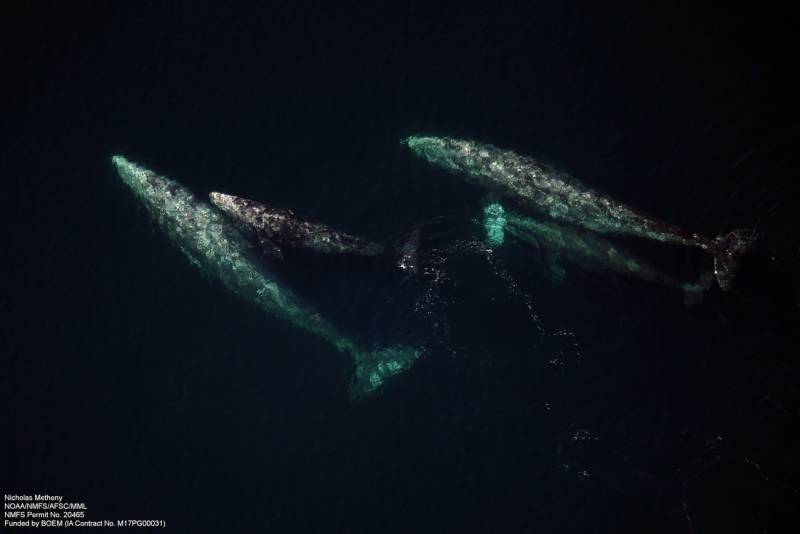NOAA has been investigating the unusual mortality event. Do we have a better idea why so many whales died last spring?
No, we don’t have a feel for that yet. What we have been able to do during this unusual mortality event is actually get teams of stranding responders onto animals that have washed up on the beach and they’re collecting a variety of biological samples, including measurements, assessment of body condition, all kinds of tissues to run bioassays. And so we really don’t know the results of those analyses yet. Sometimes those can take many months or even several years to compile the data and put them together. So we don’t have a good feel for what is happening at this very moment.
How is the overall population doing?
Gray whales in the Northern Pacific is one of the great conservation success stories of the Marine Mammal Protection Act and other protections that have been put into place.
They were nearly exterminated by commercial whaling, Yankee whalers in particular, in the 1800s to the point where, by the late 1800s, they were considered to be commercially extinct. It was no longer viable for whalers to go out looking for them and to try and hunt them. But in that time, protections went into place and the population has rebounded substantially.
We’ve been conducting this survey off of central California since 1967 so we’ve got more than 50 years of data to show the growth of the population from near extinction to 2016 was the last estimate that we have, and the population has grown to 27,000 whales. So in essence, it’s doing better than we have known it to be, in better condition than in terms of higher numbers since at least 1967.
If people are interested in seeing the migration, do you have any tips for them?
I’m all for that. I think if people can get out and see gray whales in nature, they get connected to them and they become supporters of conservation measures. And so a couple of ways to go about that is to identify a local whale watch company that does their operation in a responsible manner and get on board and go out to sea and hopefully they’ll find gray whales passing by. If you’re inclined to be seasick or reluctant to get out on the ocean, another great way to see whales is to get onto a coastal clifftop somewhere. The higher you are, the better. With a pair of binoculars just start to scan the area from the coastline to about midway to the horizon, and this time of year you’re sure to see some whales going by.

